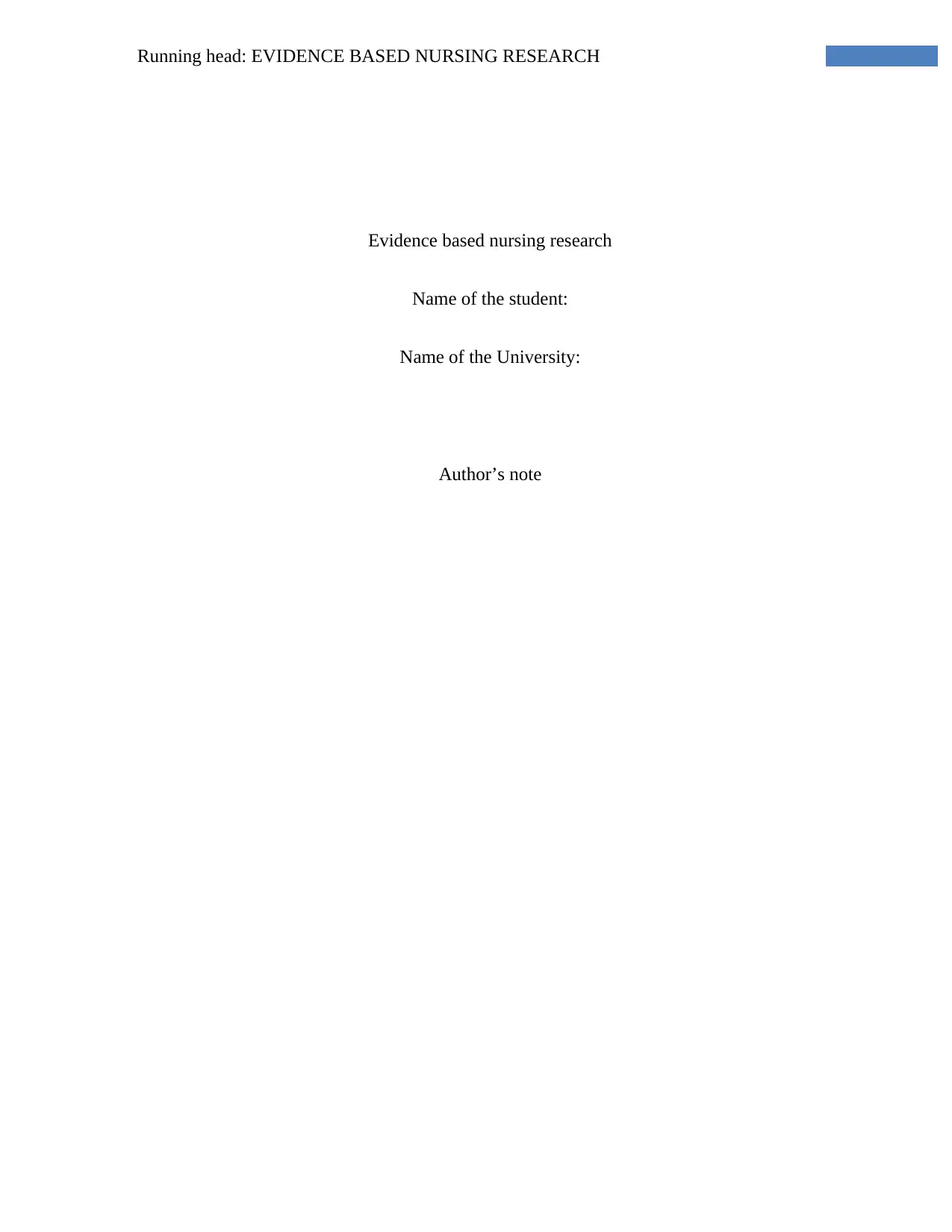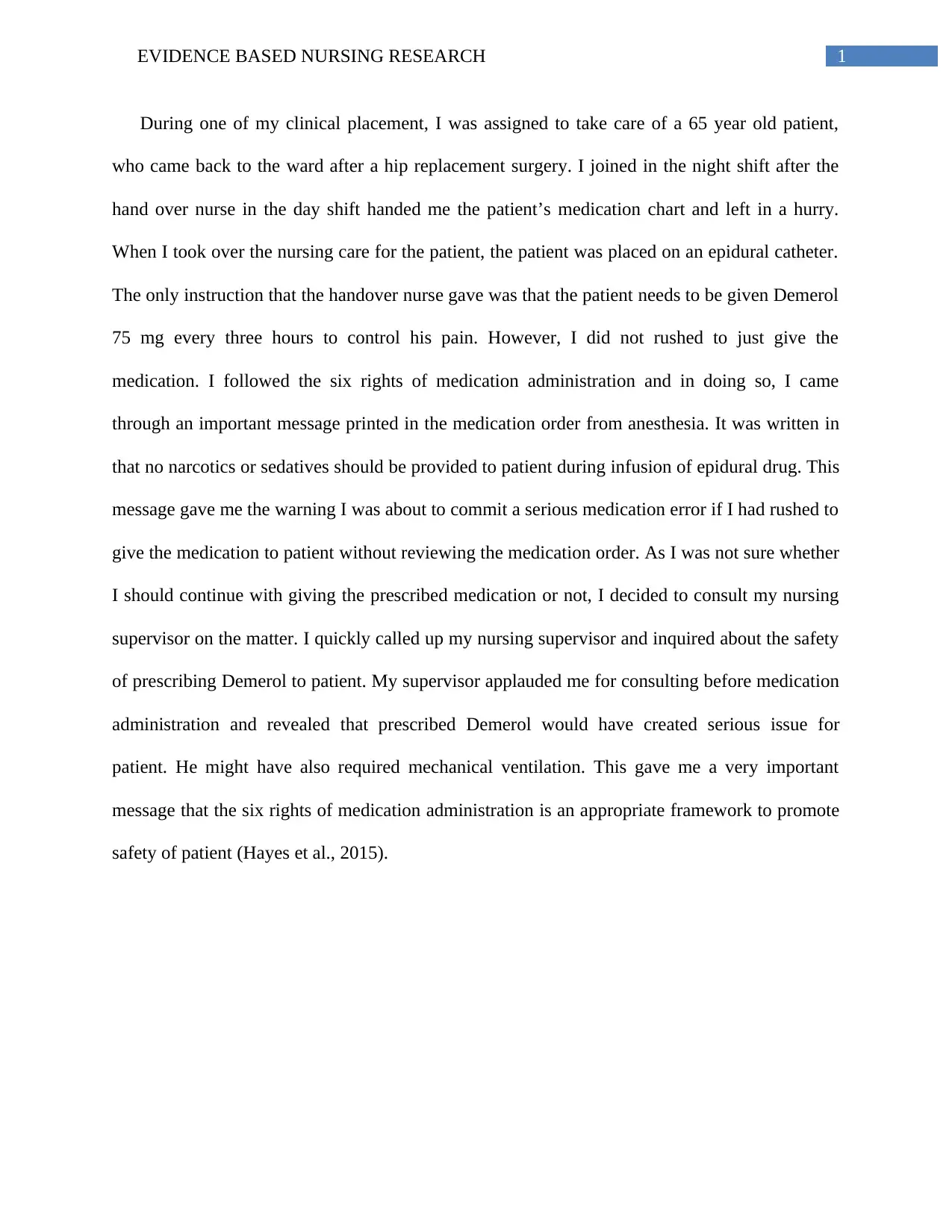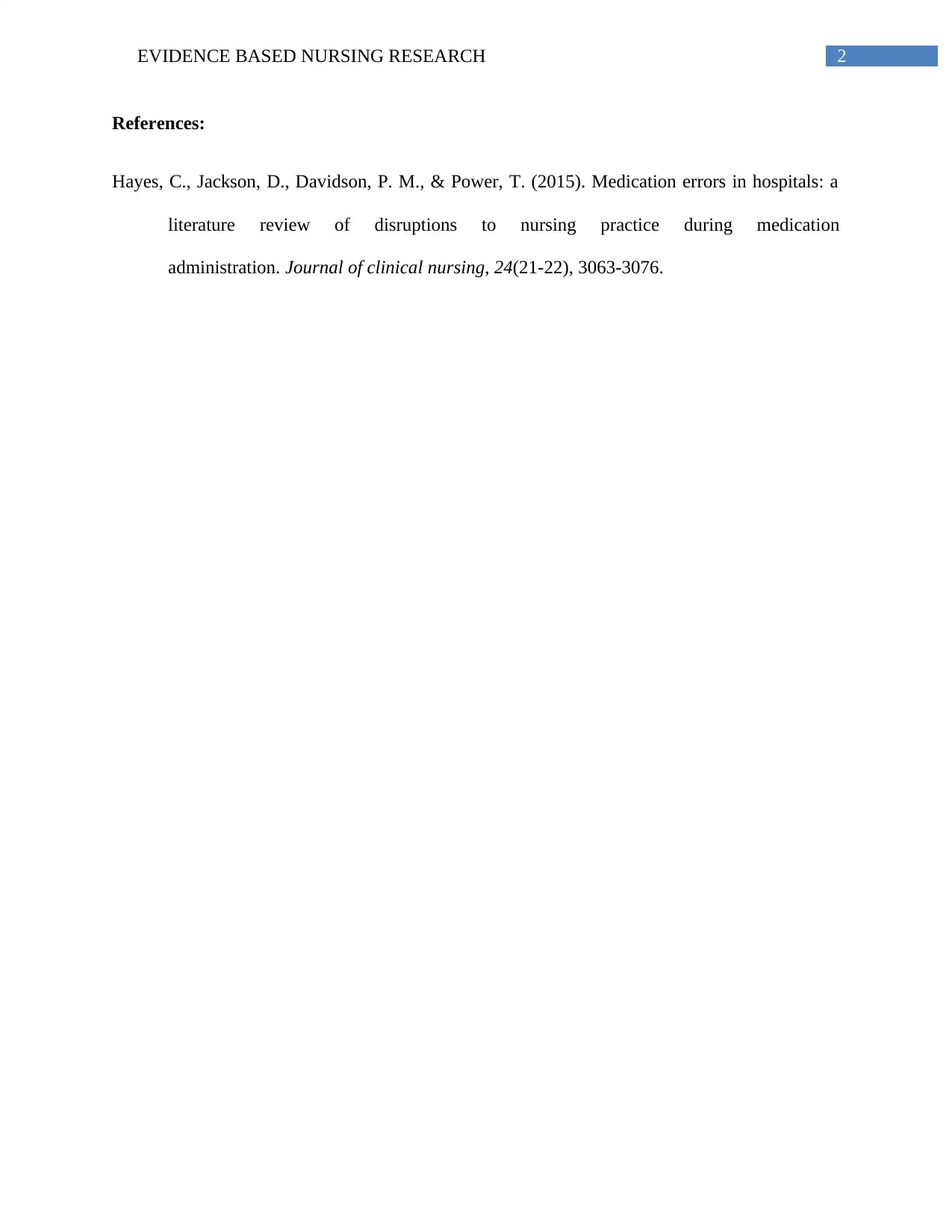Evidence based nursing research Evidence based nursing research Name of the student: Author's note
VerifiedAdded on 2023/04/23
|3
|391
|123
AI Summary
Contribute Materials
Your contribution can guide someone’s learning journey. Share your
documents today.
1 out of 3
![[object Object]](/_next/static/media/star-bottom.7253800d.svg)








